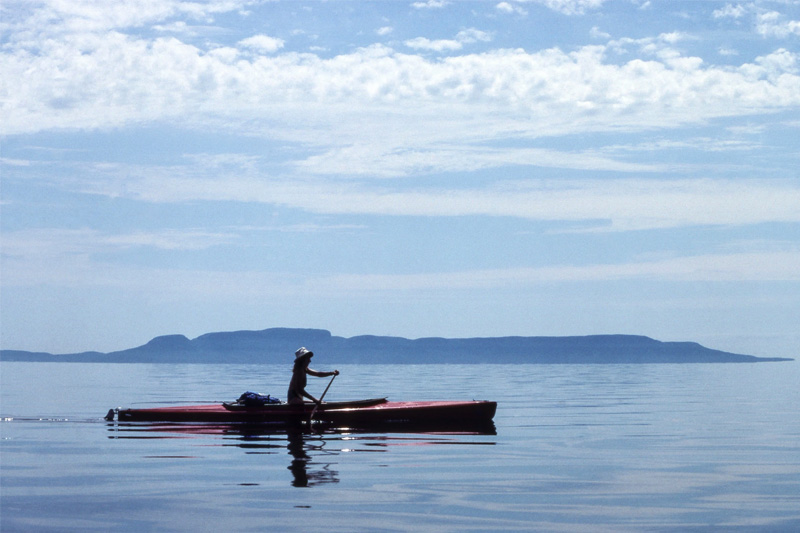The Freshwater Sea
It is not surprising that Lake Superior is often described as a freshwater sea. There’s enough water in the lake to cover the North and South American continents a foot deep. In fact, its 3-quadrillion gallons could fill all the other Great Lakes plus three more Lake Eries as well.
It takes an average of 191 years for a drop of water to circulate the basin before exiting at the Lake’s only natural outflow: the St. Mary’s River at Sault Ste Marie. Two billion years ago a volcanic rift that nearly tore the continent apart, formed the basin which filled with melted glacial waters 10,000 years ago. Today Lake Superior is the cleanest and wildest of all the Great Lakes. Its health and well-being are essential to life on the four lower Great Lakes.
Lake Superior is the headwater lake to all the Great Lakes with over 200 rivers flowing in. The lake is inhabited by over 30 native fish species including the rare coaster brook trout. The migratory routes of raptors and songbirds are infamous. The powerful forces that have shaped the land are evident everywhere. It is place of great beauty, a place to find solitude, dark night skies, the sounds of nature. People have lived, travelled, traded, hunted, fished and survived here for thousands of years. But despite its immense size, it is a fragile and vulnerable ecosystem.
The Lake Superior Watershed Conservancy invites you to join in our mission to protect and restore this important part of our planet.

